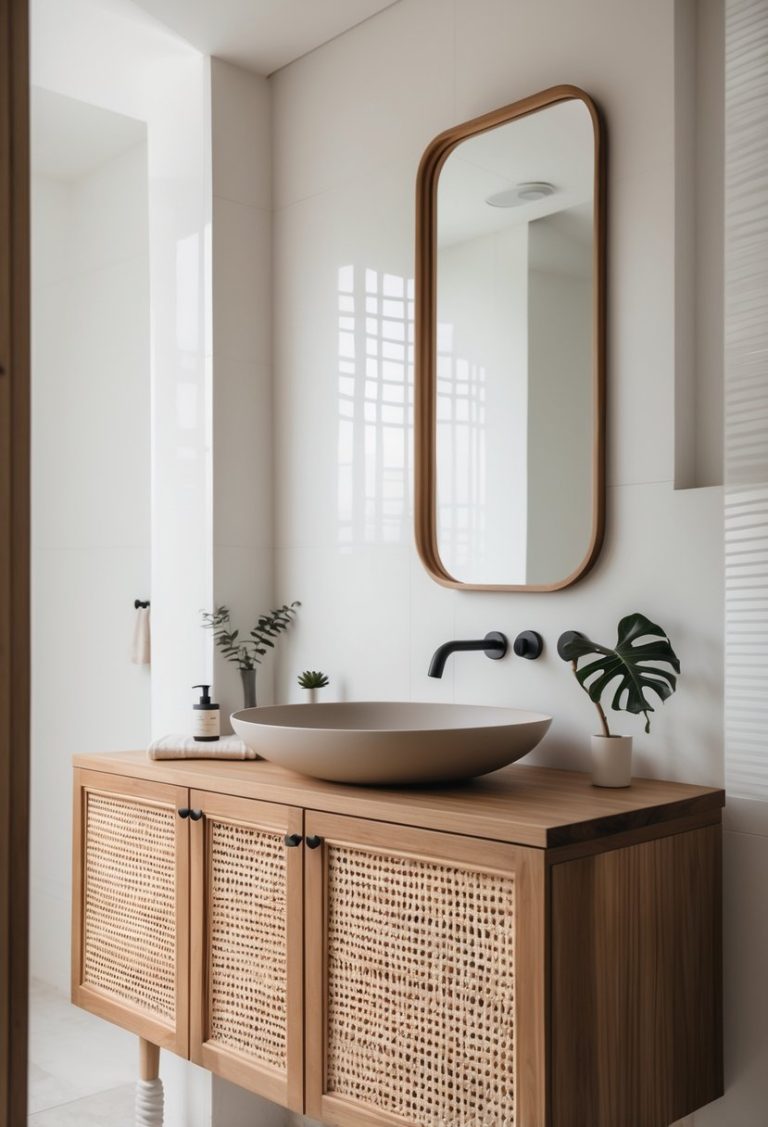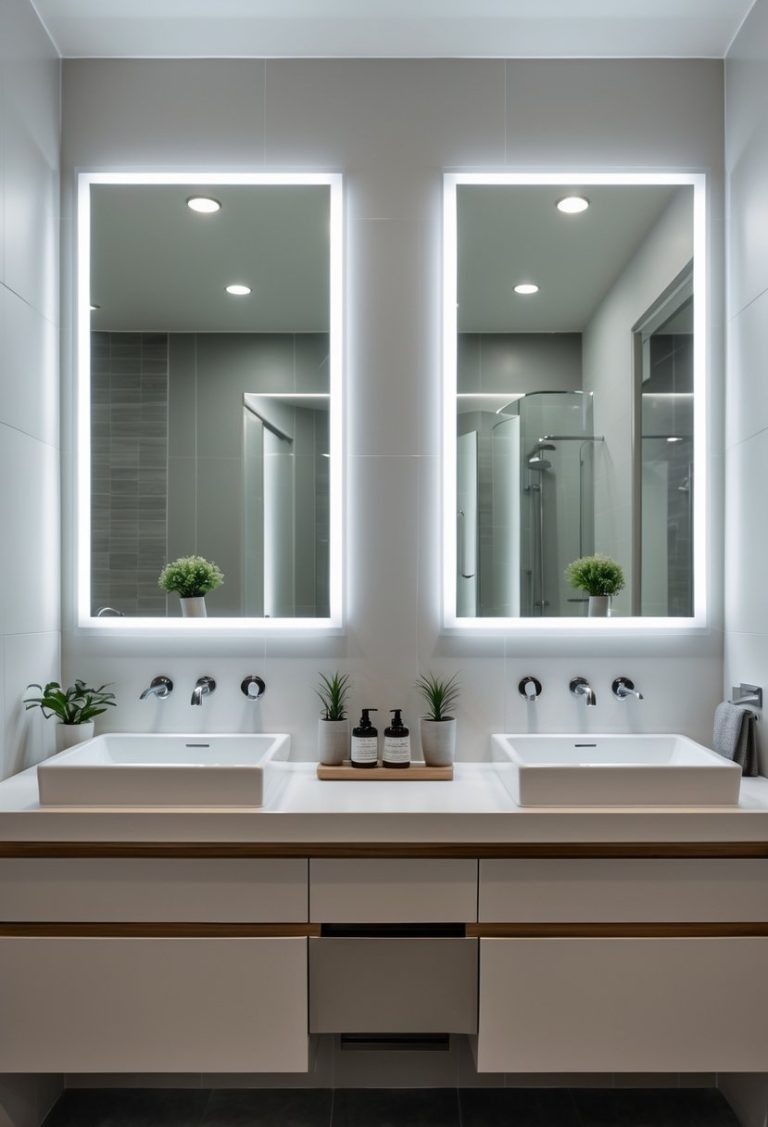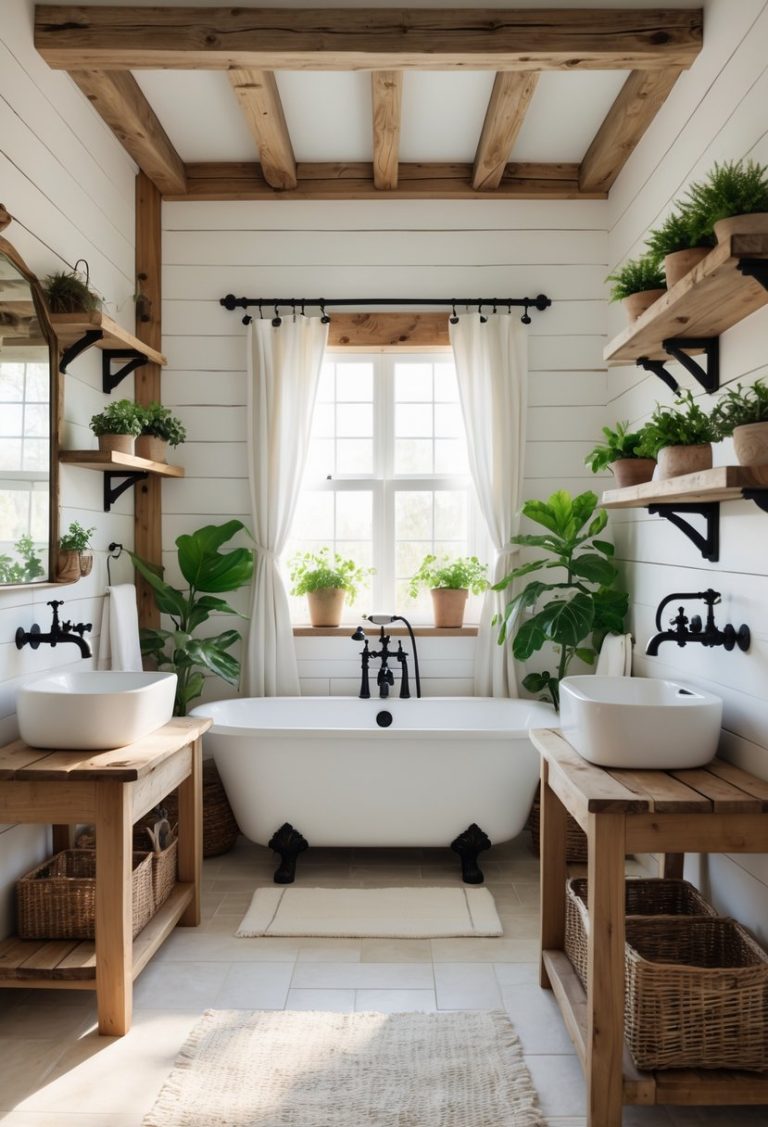Bathroom Floor Tile Ideas: Top 10 Stylish and Practical Options for Your Home
Bathroom floor tiles play a key role in shaping the look and feel of a bathroom. They help create a clean, comfortable space while adding style that fits the overall design. Choosing the right tile can change the entire atmosphere of the room.

The best bathroom floor tile ideas balance durability, design, and ease of cleaning to suit different tastes and needs. Many tile options exist, each offering unique benefits for various styles and budgets. Understanding these choices is important for anyone planning a bathroom update.
1) Hexagonal porcelain tiles
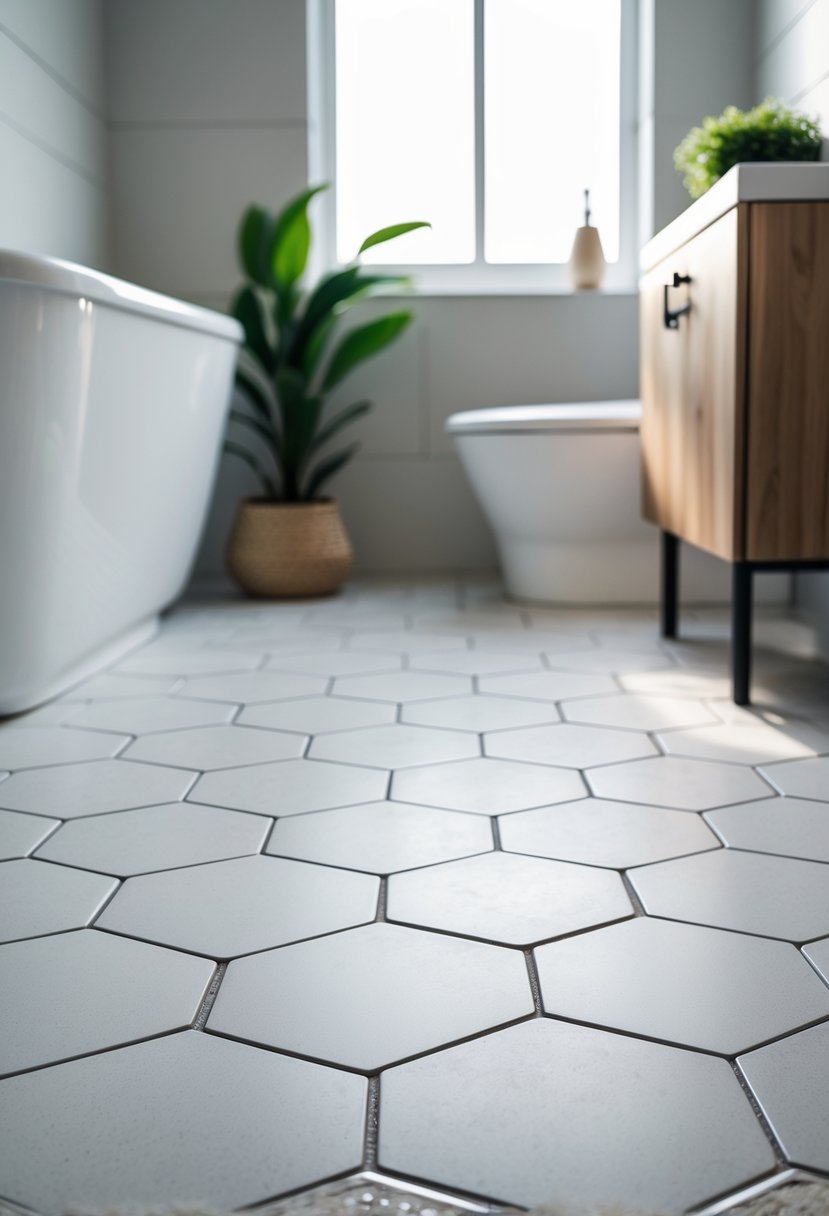
Hexagonal porcelain tiles offer durability and water resistance, making them ideal for bathroom floors. Their geometric shape adds visual interest and can create either a classic or modern look. Larger hex tiles reduce grout lines, which helps small spaces appear bigger and easier to clean. They come in various colors and sizes, allowing for many design options.
2) Marble-look ceramic tiles
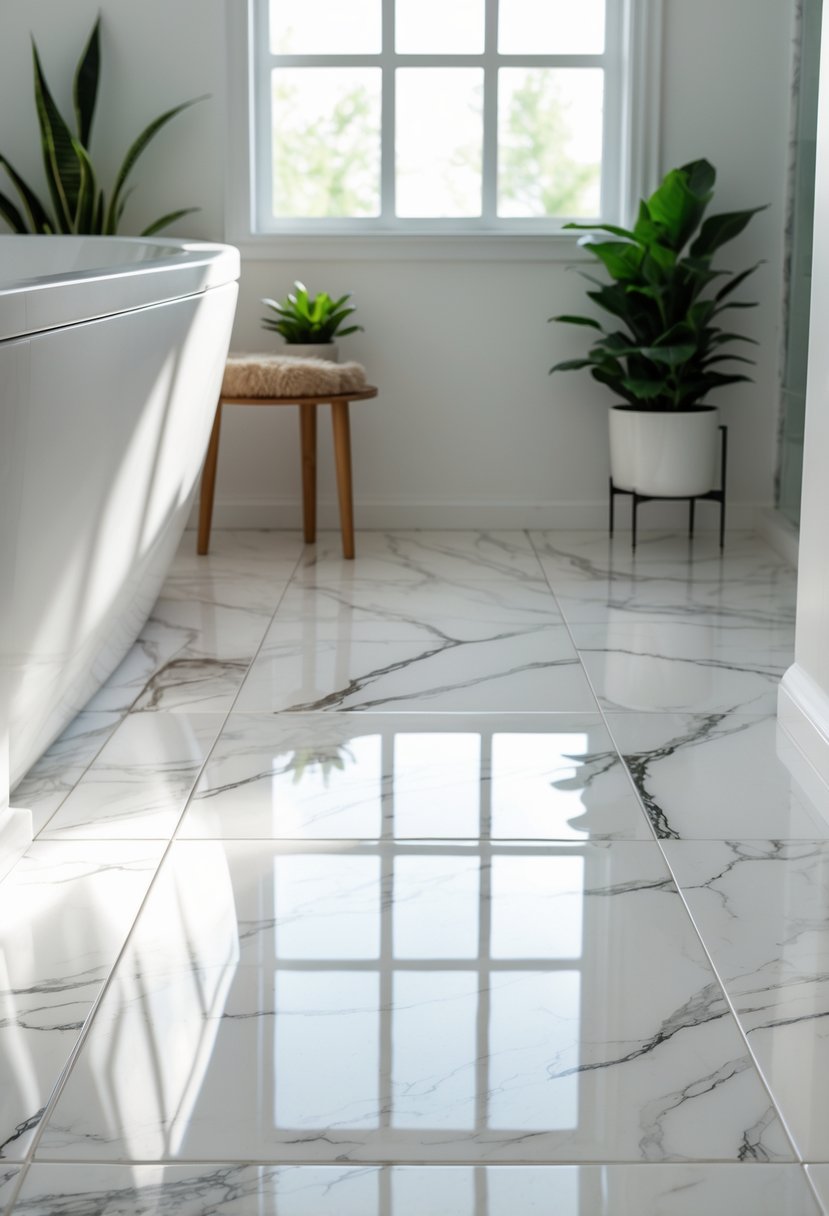
Marble-look ceramic tiles offer the beauty of marble with easier care. They resist stains and are often slip-resistant, making them practical for bathroom floors. These tiles mimic the natural veins and colors of marble, giving a stylish and classic look without the high cost or maintenance.
3) Black and white checkerboard pattern
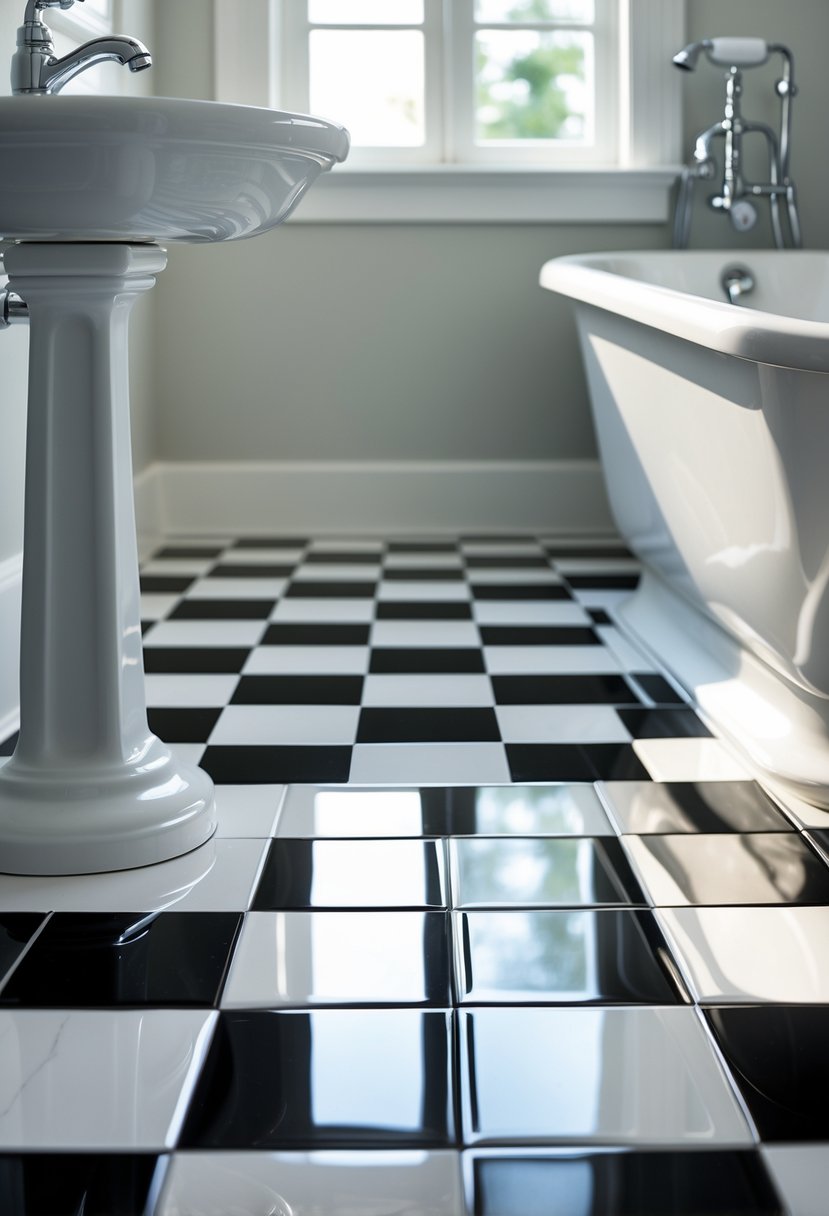
The black and white checkerboard pattern is a classic choice for bathroom floors. It offers a clean, timeless look that fits both modern and vintage styles.
This pattern is easy to care for and hides dirt well. Ceramic or porcelain tiles are good materials to use for durability and moisture resistance.
4) Vintage-inspired mosaic tiles
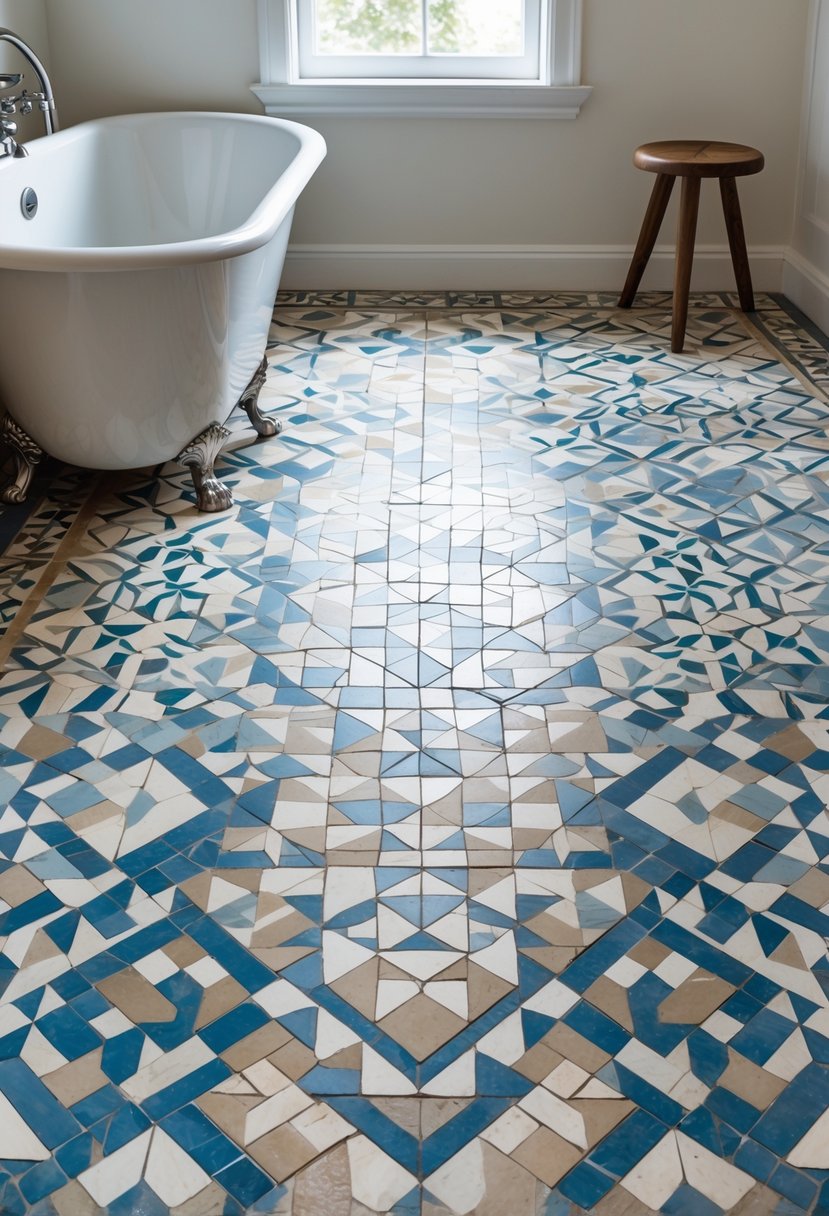
Vintage-inspired mosaic tiles bring character to bathroom floors. They often feature small, colorful pieces arranged in classic patterns.
These tiles add texture and style without overwhelming the space. Pastel colors and traditional designs, like penny rounds or checkerboards, are common choices.
They work well alone or combined with modern elements to create a balanced, timeless look.
5) Geometric patterned tiles with triangles
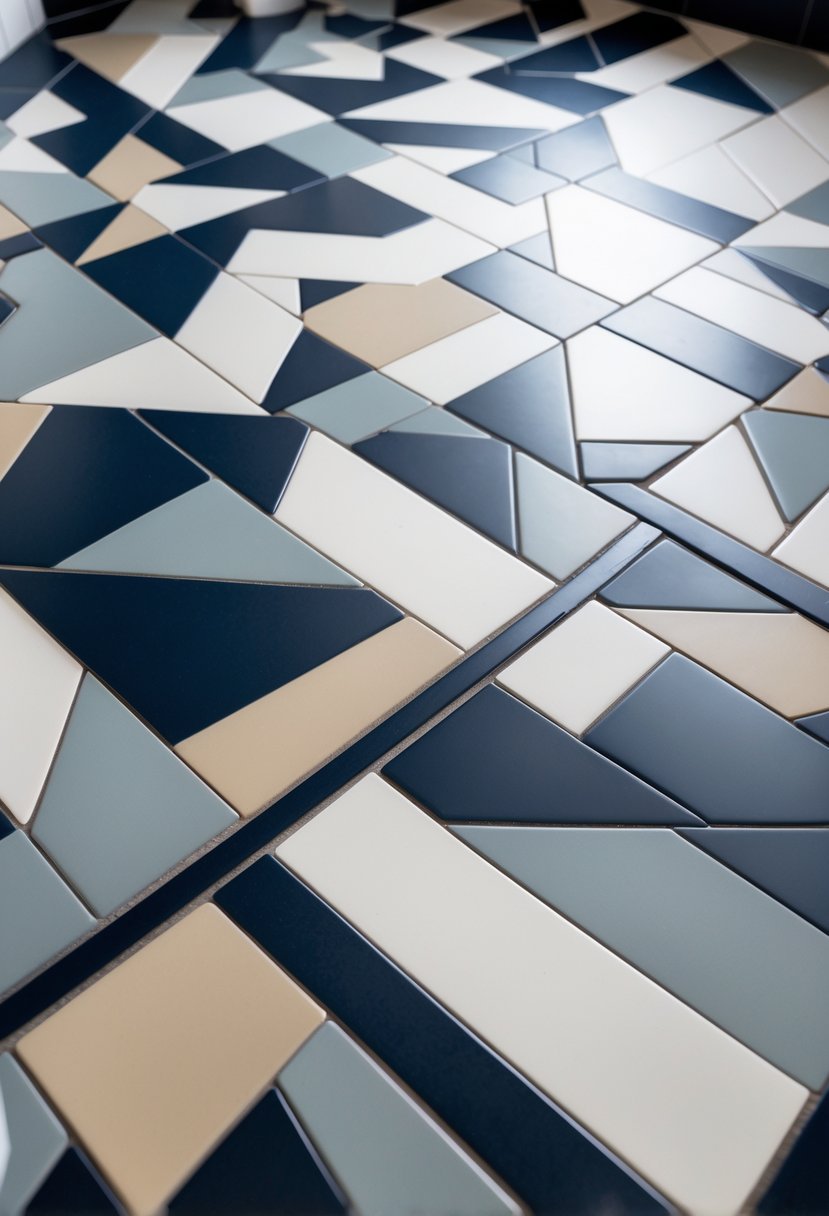
Triangle tiles create sharp, clean patterns that add structure to a bathroom floor. They come in different sizes and shapes, including right triangles and scalene triangles.
These tiles can be combined with squares or other shapes to form unique designs. Using contrasting colors can highlight the pattern and make the floor stand out without being overwhelming.
6) Penny round tiles in matte finish
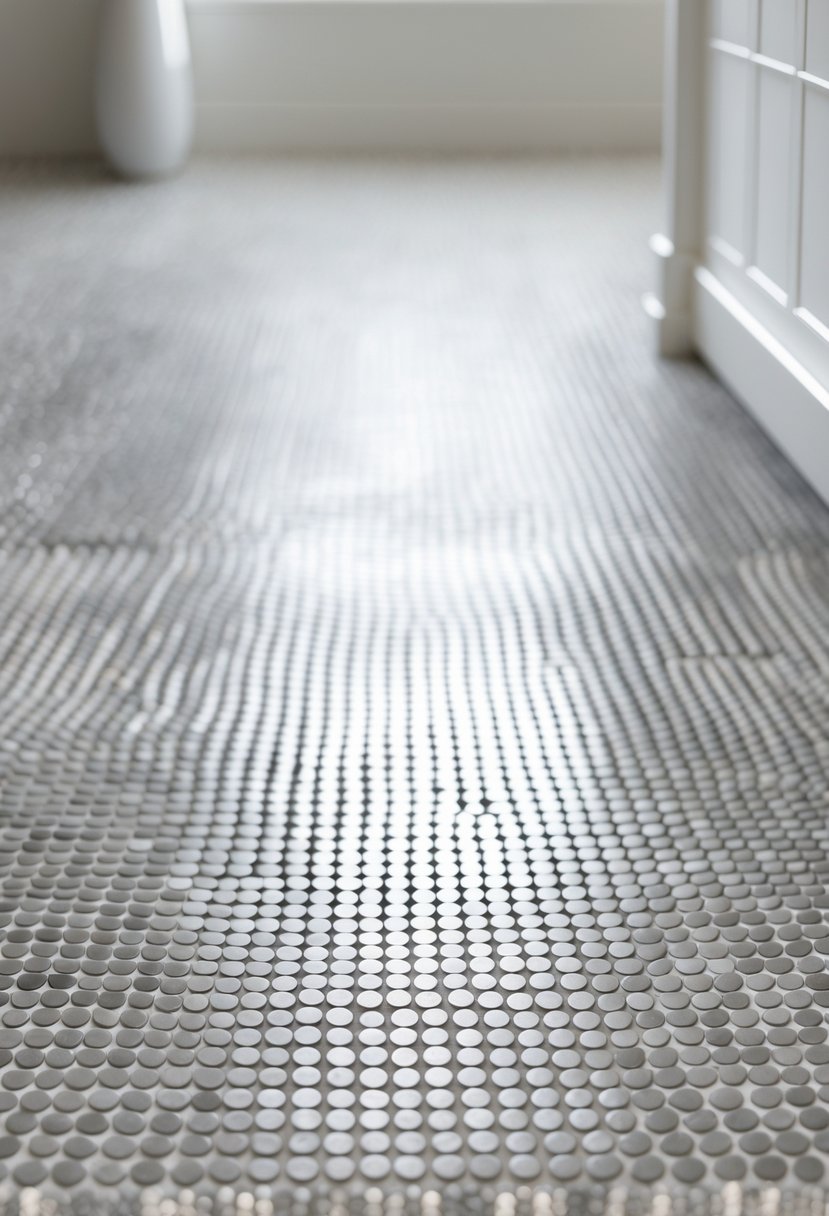
Matte penny round tiles offer a subtle, modern look for bathroom floors. They reduce glare and provide a soft texture underfoot, making the space feel calm and comfortable.
These tiles work well with bold fixtures or muted tones. Their slip-resistant surface adds safety, ideal for wet bathroom areas.
7) Terrazzo floor tiles with colorful chips

Terrazzo floor tiles with colorful chips add visual interest and character to bathrooms. The chips come in various colors, shapes, and sizes, creating unique patterns across the floor. This type of flooring works well in both modern and retro designs, offering durability and ease of cleaning while enhancing the room’s style.
8) Zellige handmade clay tiles
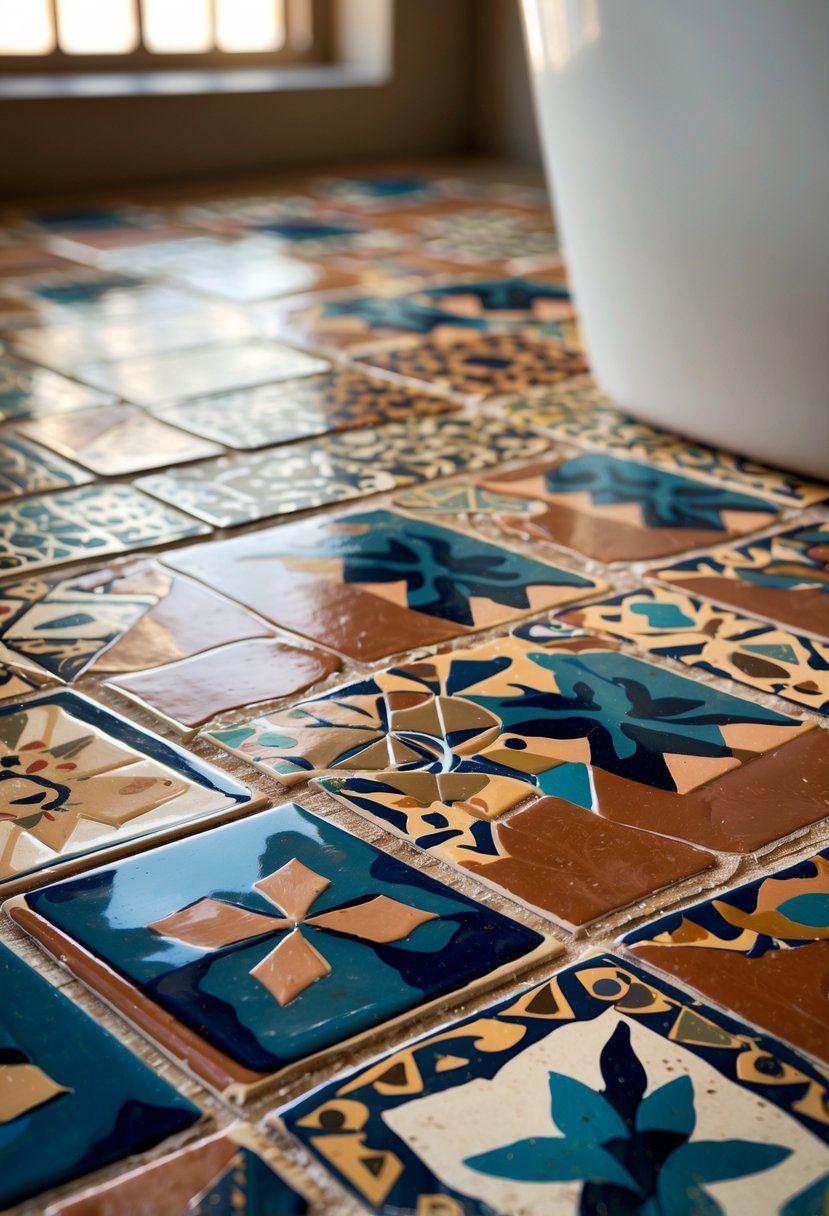
Zellige tiles are handcrafted from clay and glazed at high temperatures. Each tile has unique variations in color, shine, and texture due to its handmade process.
They add a natural, artistic look to bathroom floors. Their irregular shapes and finishes create a distinctive surface that stands out from regular tiles.
9) Pebble stone floor tiles
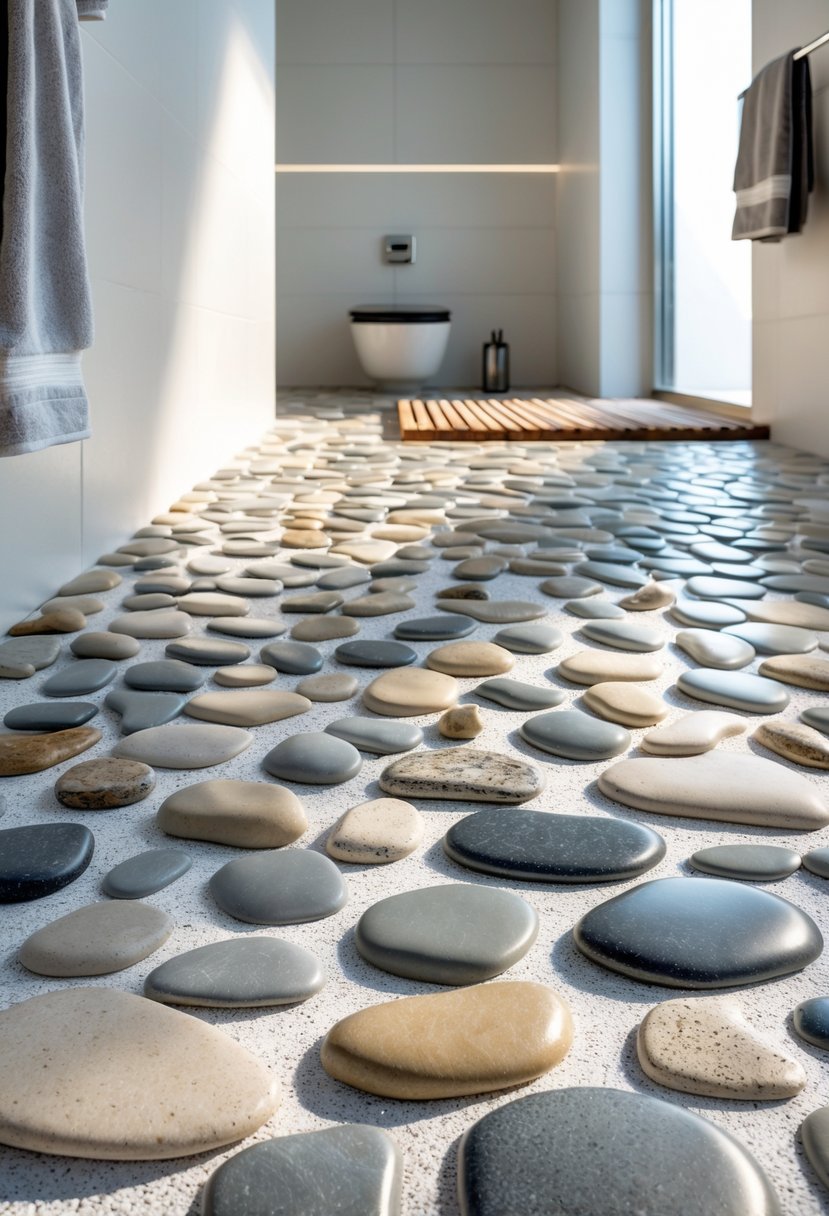
Pebble stone floor tiles give bathrooms a natural look and a unique texture. They feel nice under bare feet and add a simple, earthy style.
These tiles work well on shower floors or as accents. They create a calm, spa-like atmosphere without being too flashy. Installation requires careful grout work to keep the surface even and safe.
10) Travertine natural stone tiles
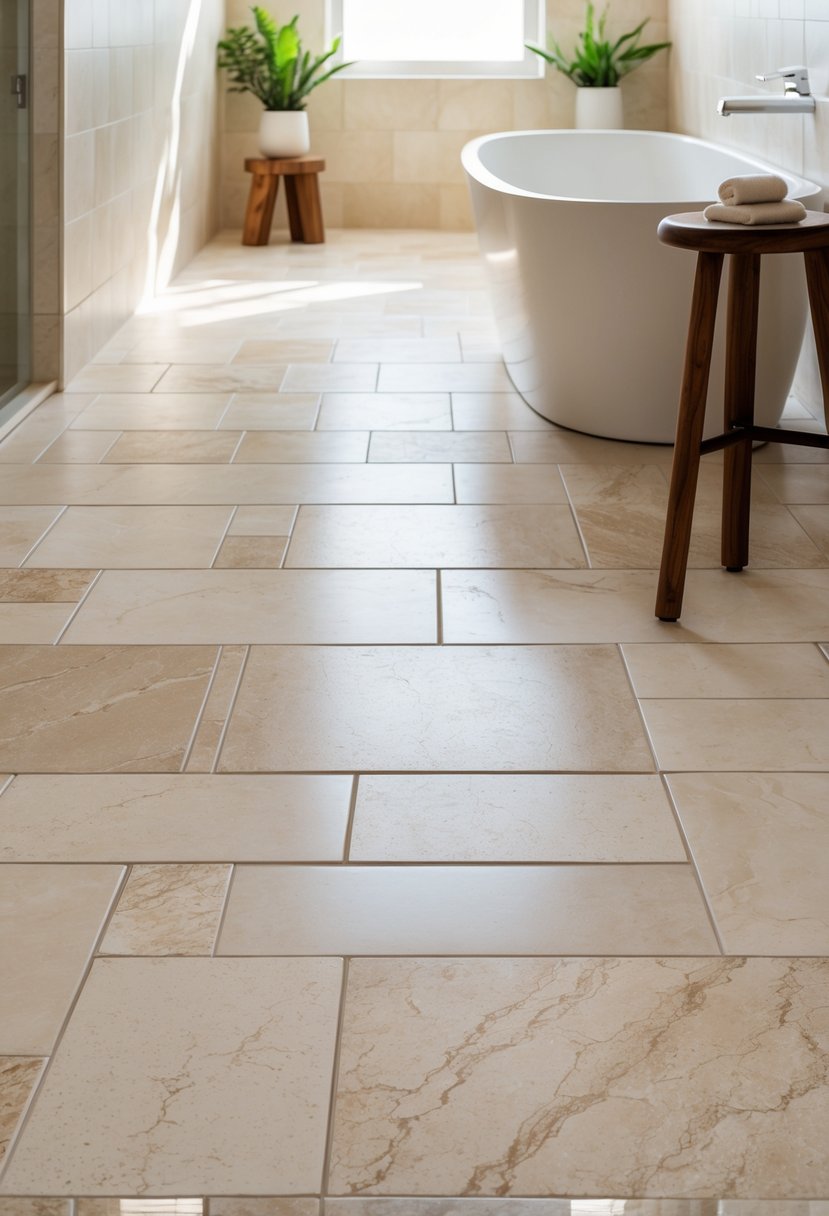
Travertine tiles offer a natural, timeless look for bathroom floors. They come in various finishes like polished, honed, and tumbled, allowing flexibility in style.
This stone handles moisture well, making it a good choice for bathrooms. It adds warmth and texture but needs regular sealing to protect against stains and wear.
How to Choose the Right Bathroom Floor Tile
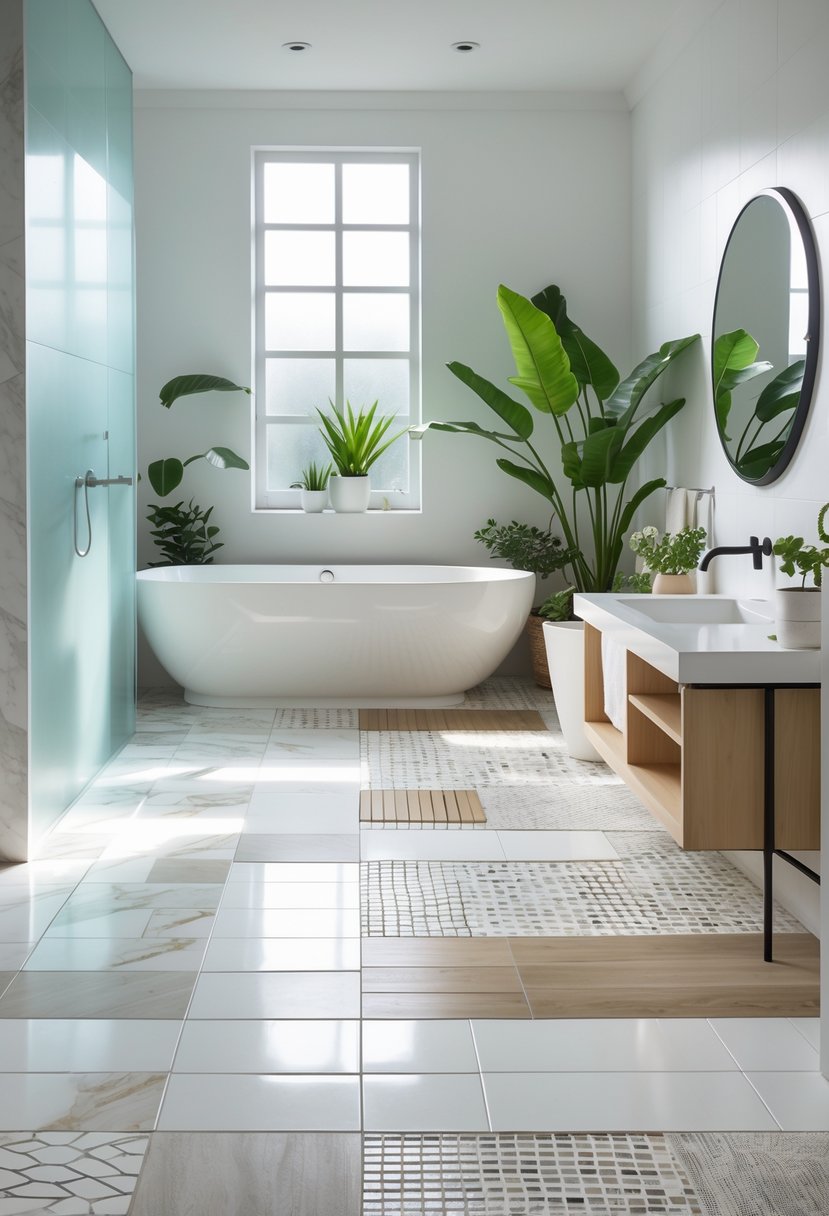
Choosing the right tile means balancing durability, safety, and style. The tile must stand up to water and wear, prevent slips, and fit the bathroom’s design. Each factor plays a key role in getting the best tile for the room’s needs.
Assessing Durability and Water Resistance
Bathroom floors face constant water and heavy foot traffic. Tiles that are durable and water-resistant are essential to avoid damage and costly repairs. Porcelain and ceramic tiles are popular because they handle moisture well and resist wear.
Porcelain is denser and less porous than ceramic, making it more water-resistant and durable. Natural stone tiles like slate or granite can be durable but often need sealing to prevent water damage. Vinyl tiles offer good water resistance and are softer underfoot but may wear faster.
Check the tile’s water absorption rate—lower rates mean better resistance. Also, consider the tile’s finish; matte or textured finishes can hide wear better than glossy surfaces. Durability and water resistance ratings help guide the best choice for the bathroom environment.
Understanding Slip Resistance Ratings
Safety is key in bathroom flooring. Wet tiles can be slippery, so selecting a tile with a proper slip resistance rating is critical. Tiles are rated by their coefficient of friction (COF); higher COF means better grip.
For bathrooms, a COF of 0.6 or higher is recommended to reduce slipping risks. Textured tiles or those with a matte finish tend to offer better slip resistance. Avoid highly polished or smooth glazed tiles in wet areas.
Some tiles come with an R-rating system (R9 to R13), indicating their slip resistance on inclined surfaces. For most home bathrooms, R10 or higher offers a safe balance. Always consider placement; areas near showers need more slip-resistant options.
Coordinating with Overall Bathroom Design
Tile choice affects the bathroom’s style and feel. Neutral colors create a calm base that allows wall colors and accessories to stand out. Bold or patterned tiles become the room’s focus, adding energy and character.
Consider the size and shape of tiles. Large tiles can make a small bathroom feel bigger. Smaller or mosaic tiles work well in detailed areas or to add texture. Matching grout color with tile or opting for contrast can change the look significantly.
Materials and finishes should complement fixtures and cabinetry. For example, matte tiles pair well with modern styles, while polished stone suits traditional designs. Balance function with aesthetics to ensure the floor fits both practical needs and visual goals.
Installation and Maintenance Tips
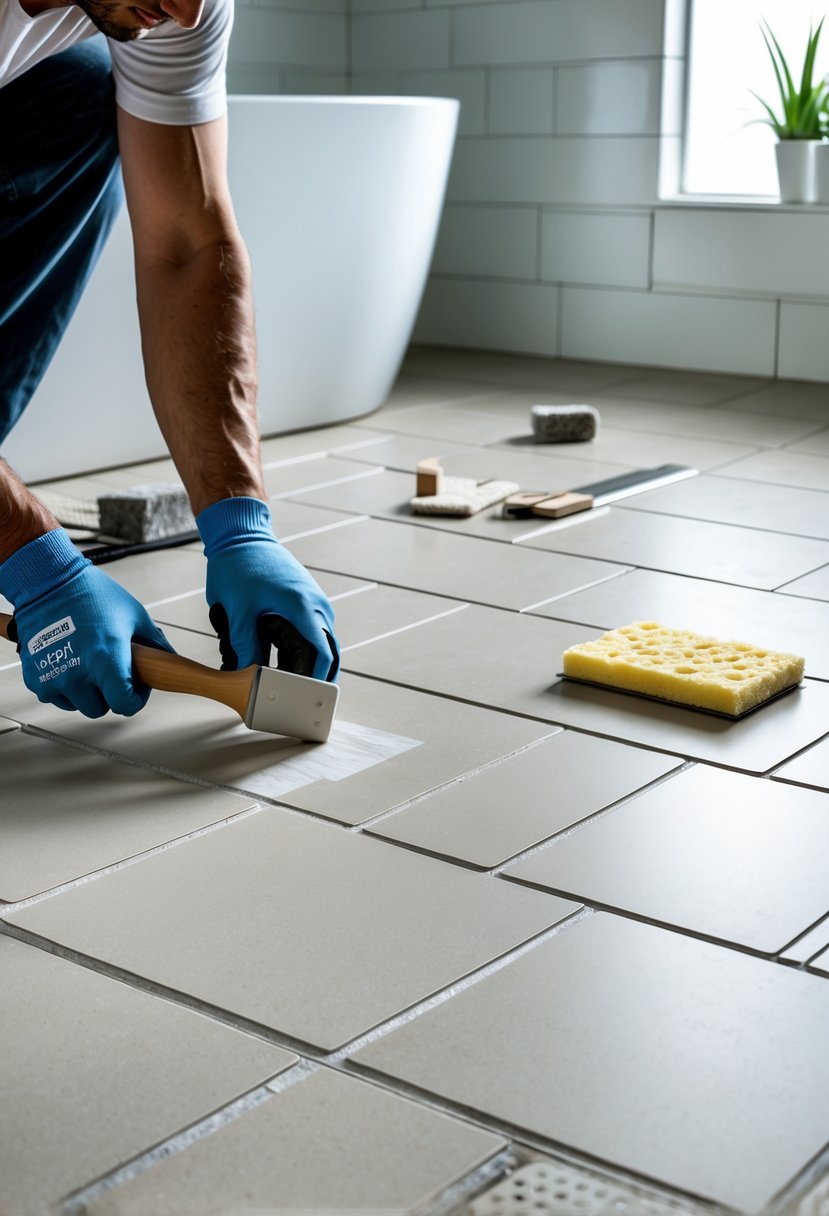
Proper installation and regular care help bathroom floor tiles last longer and look better. It’s important to start with a well-prepared subfloor, use the correct grouting techniques, and maintain cleanliness to prevent damage.
Preparing the Subfloor for Tile
The subfloor must be clean, dry, and level before tile installation. Uneven surfaces can cause tiles to crack or loosen over time.
Remove any old flooring, debris, or dust completely. Check for moisture issues and repair leaks to avoid mold growth under the tiles. For wooden subfloors, adding a cement backer board can improve stability and prevent flexing.
Use a leveling compound on uneven spots. The surface should be flat within 1/8 inch over a 10-foot span. This step ensures tiles lay flat and grout lines stay even.
Best Practices for Grouting
Grout seals the gaps between tiles and adds strength to the floor. It must be applied carefully to avoid cracks and stains.
Choose grout that matches the tile type and bathroom use. Epoxy grout is durable and water-resistant but harder to work with. Cement-based grout is easier to apply but may need sealing.
Use a rubber float to press grout into joints, then remove excess grout at a 45-degree angle. Clean the tiles with a damp sponge before the grout dries to avoid haze. Let the grout cure fully as directed, usually 24-72 hours.
Sealing grout after curing prevents moisture absorption and staining, extending its lifespan.
Cleaning and Long-Term Care
Regular cleaning prevents dirt and grime buildup that can damage tiles and grout. Use a pH-neutral cleaner designed for tile floors, avoiding harsh acids or ammonia.
Sweeping or vacuuming daily helps remove abrasive dust. Mop weekly with warm water and cleaning solution. Dry the floor after mopping to prevent slippery surfaces and water spots.
Inspect grout lines periodically. Reapply sealant every 1-2 years, or sooner if the grout looks dull or stained. Replace cracked tiles or grout to stop water from seeping under the floor.


